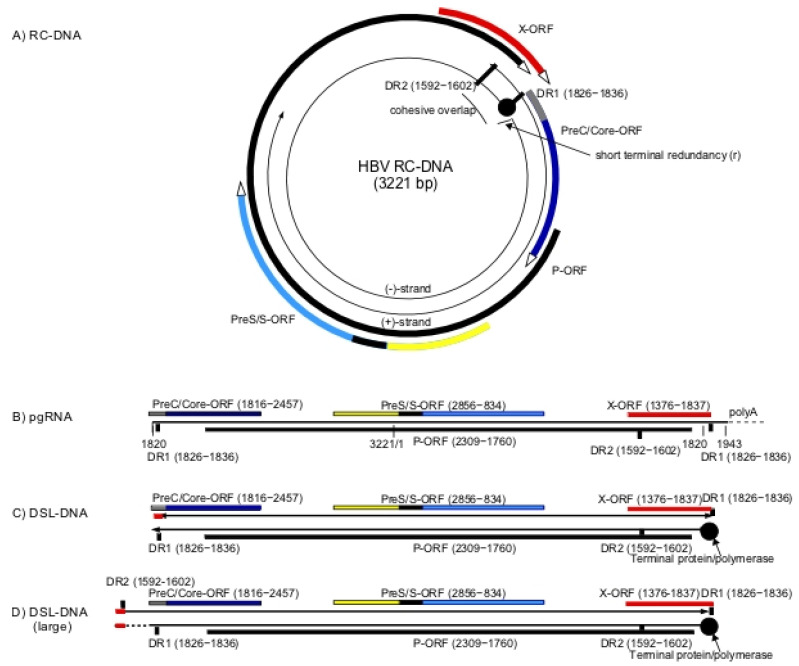Figure 1.
Human hepatitis B virus (HBV) DNA replication intermediates and integration into the chromosomal DNA of hepatocytes: Viral RC-DNA, shown at the top (A), is converted to covalently closed circular DNA (CCC-DNA) (not shown) during initiation of infection. All of the virus open reading frames (ORFs) are encoded on the negative strand of the RC-DNA genome as shown and include the polymerase (P-ORF), PreC/Core (C-ORF), PreS/S-ORF and X-ORF. Pre-genomic RNA (pgRNA) (B) is transcribed from CCC-DNA and functions as the mRNA for core (nucleocapsid) and polymerase (reverse transcriptase) proteins, both of which are required for viral DNA synthesis. Core protein is also recognized in infected cells as hepatitis B core antigen (HBcAg). An mRNA with extra 5′ sequences is the template for the PreC/Core protein that is processed into the secreted hepatitis B e antigen (HBeAg), while sub-genomic mRNAs encode the HBV envelope proteins (HBsAg) and the HBV X protein (HBx). Pre-genomic RNA along with the viral polymerase is packaged in the cytoplasm into viral nucleocapsids comprised of core protein and is reverse transcribed into new viral DNA. RC-DNA (A) is the major product of reverse transcription. As discussed in the text, DSL-DNA (C) is a minor species formed when the RNA primer for second strand synthesis fails to translocate from DR1 to DR2. DSL-DNA is the usual precursor for HBV DNA integration into chromosomal DNA. A second larger form of DSL-DNA (D) is proposed to be formed from RC-DNA during initiation of infection, via strand displacement DNA synthesis through the cohesive overlap region of RC-DNA. As discussed, this larger DSL-DNA species may also be a precursor for integration of HBV DNA into chromosomal DNA.

